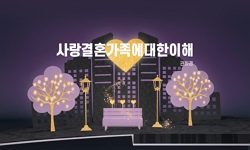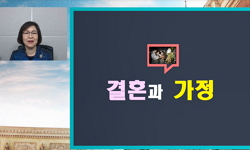Chronic illness requiring attention and management during a long period of time puts great burden onto patients, their family and society. For patients with chronic illnesses, providing social support is the most important, and the fundamental support...
http://chineseinput.net/에서 pinyin(병음)방식으로 중국어를 변환할 수 있습니다.
변환된 중국어를 복사하여 사용하시면 됩니다.
- 中文 을 입력하시려면 zhongwen을 입력하시고 space를누르시면됩니다.
- 北京 을 입력하시려면 beijing을 입력하시고 space를 누르시면 됩니다.




만성질환자 배우자의 돌봄 경험에 대한 이론 구축 = A Theory Construction on the Care Experience for Spouses of Patients with Chronic Illness
한글로보기https://www.riss.kr/link?id=A3027795
- 저자
- 발행기관
- 학술지명
- 권호사항
-
발행연도
2000
-
작성언어
-
-
주제어
배우자 ; 만성질환자 ; 부담감 ; 돌봄 경험 ; 근거이론적 접근 ; spouse ; Chronic illness ; burden ; care experience
-
KDC
500
-
등재정보
SSCI,SCIE,SCOPUS,KCI등재
-
자료형태
학술저널
- 발행기관 URL
-
수록면
122-136(15쪽)
- DOI식별코드
- 제공처
- 소장기관
-
0
상세조회 -
0
다운로드
부가정보
다국어 초록 (Multilingual Abstract)
For patients with chronic illnesses, providing social support is the most important, and the fundamental support comes from their spouses. Amount and quality of support from spouses seems to differentiated according to the sex of patients. Female patients tend to believe that their spouses are not very supportive. Therefore, the researchers assessed the burden of husbands of female arthritis patients to discover the factors that result in greater burden. Also, they developed a theoretical model of husbands' care for their wives through a qualitative research into husbands' experience.
Method 1: The study material was 650 female arthritis patients registered in an arthritis clinic. The questionnaire about the disease experience of female arthritis patients and the burden of husbands were sent. Returned questionnaires numbered 210(32.3%) and 27 were excluded because of inadequate answers. The remaining 183 questionnaires were analyzed. The mean age of the patients was 51 years and the mean age of spouses was 55 years. The mean marital period was 28 years. The average duration since diagnosis was 9.1 years. Education level was varied from primary school to graduate school, and average income/month was 1,517,300 won.
Method 2: Initial questionnaire studies on the burden of husbands were performed. Among 183 responding husbands, 23 consented to participate for a qualitative research. Data was obtained by direct and telephone interviews. The mean age of participants was 58 years, and the educational level and socioeconomic status also varied.
Result:
1. Husbands' burden: The average burden was 57.68 with a range of 6-96.
2. Burden and general characteristics: The husband's burden correlated with the age of the patients, numbers in the family, therapy methods, patient's level of discomfort, patient's disease severity, patient's level of dependence and the husband's understanding of the level of severity. 3. Linear correlation analysis on burden: The husbands' burden is explained in 22.5% by husband's recognition of level of severity and husbands' age.
4. There were four patterns of the burden on husbands: both objectve burden and subjective burden were high (pattern I), both of objectve burden and subjective burden were low(pattern II), objective burden was high but subjective burden was low(pattern III), objective burden was low but subjective burden was high(pattern IV). The pattern was correlated with the family income, educational level of the patients and their husbands, therapy methods, patient's level of discomfort, patient's disease severity, patient's level of dependence and husband's understanding of level of severity.
5. The core category of the caring experience of the husbands with arthritis patients was companionship. The causal factor was the patients' experience due to symptoms : physical disfigurement, pain, immobility, limitation of house chores, and limitation of social activities. Contextural factors are husbands' identification of housework and husbands' concern about the disease. The mediating factors are economic problems, fear of aging, feeling of limitation and family support. The strategy for interaction is mind control and how to solve emotional stress. The companionship resulted from caring activities, participation of household activities, helping patients' to coping with emotional experience.
6. Companionship is established through the process of entering intervention, and caring state of mind. Entering intervention is the phase of participation of therapy and involvement of houseworks. The caring phase consists of decision on therapy, providing therapy, providing direct care, and taking over the household role of wife. Through caring phase, the changing phase set a stage in which husbands consolidate the relationship with their wives, and are reminded of the meaning of marriage. As a result, in changing phase, husbands' companionship is enhanced. In conclusion, nursing care of chronic illnesses should include a family member especially the spouse. All information on disease shoud be provided to patients and whole family member. Strong support should also be provided to overcome difficulties in taking over role of other sex. Then the quality of life of patients and families will be much improved.
Chronic illness requiring attention and management during a long period of time puts great burden onto patients, their family and society.
For patients with chronic illnesses, providing social support is the most important, and the fundamental support comes from their spouses. Amount and quality of support from spouses seems to differentiated according to the sex of patients. Female patients tend to believe that their spouses are not very supportive. Therefore, the researchers assessed the burden of husbands of female arthritis patients to discover the factors that result in greater burden. Also, they developed a theoretical model of husbands' care for their wives through a qualitative research into husbands' experience.
Method 1: The study material was 650 female arthritis patients registered in an arthritis clinic. The questionnaire about the disease experience of female arthritis patients and the burden of husbands were sent. Returned questionnaires numbered 210(32.3%) and 27 were excluded because of inadequate answers. The remaining 183 questionnaires were analyzed. The mean age of the patients was 51 years and the mean age of spouses was 55 years. The mean marital period was 28 years. The average duration since diagnosis was 9.1 years. Education level was varied from primary school to graduate school, and average income/month was 1,517,300 won.
Method 2: Initial questionnaire studies on the burden of husbands were performed. Among 183 responding husbands, 23 consented to participate for a qualitative research. Data was obtained by direct and telephone interviews. The mean age of participants was 58 years, and the educational level and socioeconomic status also varied.
Result:
1. Husbands' burden: The average burden was 57.68 with a range of 6-96.
2. Burden and general characteristics: The husband's burden correlated with the age of the patients, numbers in the family, therapy methods, patient's level of discomfort, patient's disease severity, patient's level of dependence and the husband's understanding of the level of severity. 3. Linear correlation analysis on burden: The husbands' burden is explained in 22.5% by husband's recognition of level of severity and husbands' age.
4. There were four patterns of the burden on husbands: both objectve burden and subjective burden were high (pattern I), both of objectve burden and subjective burden were low(pattern II), objective burden was high but subjective burden was low(pattern III), objective burden was low but subjective burden was high(pattern IV). The pattern was correlated with the family income, educational level of the patients and their husbands, therapy methods, patient's level of discomfort, patient's disease severity, patient's level of dependence and husband's understanding of level of severity.
5. The core category of the caring experience of the husbands with arthritis patients was companionship. The causal factor was the patients' experience due to symptoms : physical disfigurement, pain, immobility, limitation of house chores, and limitation of social activities. Contextural factors are husbands' identification of housework and husbands' concern about the disease. The mediating factors are economic problems, fear of aging, feeling of limitation and family support. The strategy for interaction is mind control and how to solve emotional stress. The companionship resulted from caring activities, participation of household activities, helping patients' to coping with emotional experience.
6. Companionship is established through the process of entering intervention, and caring state of mind. Entering intervention is the phase of participation of therapy and involvement of houseworks. The caring phase consists of decision on therapy, providing therapy, providing direct care, and taking over the household role of wife. Through caring phase, the changing phase set a stage in which husbands consolidate the relationship with their wives, and are reminded of the meaning of marriage. As a result, in changing phase, husbands' companionship is enhanced. In conclusion, nursing care of chronic illnesses should include a family member especially the spouse. All information on disease shoud be provided to patients and whole family member. Strong support should also be provided to overcome difficulties in taking over role of other sex. Then the quality of life of patients and families will be much improved.
동일학술지(권/호) 다른 논문
-
학교청소년이 지각하는 집단 따돌림에 관한 연구 -초, 중, 고등학생을 대상으로-
- 한국간호과학회
- 정혜경 ( Chung Hae Kyung )
- 2000
- SSCI,SCIE,SCOPUS,KCI등재
-
한국인의 건강과 관련된 돌봄 - 강원도 위촌리 지역민을 중심으로 한 문화기술지 -
- 한국간호과학회
- 황혜연 ( Hwang Hye-yeon )
- 2000
- SSCI,SCIE,SCOPUS,KCI등재
-
- 한국간호과학회
- 이춘옥 ( Li Chun Yu )
- 2000
- SSCI,SCIE,SCOPUS,KCI등재
-
- 한국간호과학회
- 유명숙 ( Yoo Myung Sook )
- 2000
- SSCI,SCIE,SCOPUS,KCI등재




 ScienceON
ScienceON KISS
KISS






